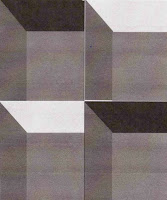
For seven years now I've taught at a homeschool co-op while my own kids attend public school, and I attended parochial school for 12 years, so I feel like I've gotten a front-row seat to the best of all worlds. I've heard endless debates about which mode of education is best, with lots of stereotypes and suspicion thrown around. My take? There are excellent aspects to each, and each has its own drawbacks. I'd rather skip the esoteric arguments and move right to being part of a solution. If that sounds OK to you, keep reading. If not, go on and post on a debate website somewhere.
My passion is STEM (science technology engineering and math) education. Key elements of STEM ed include group collaborative skills, innovation, and stem concepts through project-based learning. What better place for homeschoolers, who are traditionally more independent learners, to gain experience than at a co-op with other same-aged students?
Last year my 9th and 10th grade Introduction to Engineering students filtered water, built tiny cantilevers, played with polymers and crafted a Wright Flyer out of recyclables. This year many of those same students are in Engineering 2 and we're starting a new effort. It's called service learning, and it's been on my brain ever since I stumbled upon the National Service Learning Partnership's website .
We're embarking on a 20-24 week project (we're 3 weeks in now) called Capstone. In the Capstone projects, teams of three, four or five students will practice service learning and the design cycle. Service learning is a model where educational concepts and teamwork are put to use in projects for the good of the local community. Service learning can happen in any subject - an example would be creating "reading buddies" where older students practice reading skills by working with younger kids.
In the STEM (science/technology/engineering/math) world service learning can happen by student teams designing computer models for churches, inventing products for animal shelters to make their work easier, creating computer applications to help senior citizens, and many other possibilities. Some of these very ideas were proposed last week by student groups.
Some service learning models are student-led, and this is what I'm striving for. Our four class group leaders volunteered for the leads and are doing an admirable job so far. After assembling teams and brainstorming ideas, teams presented their select ideas for feedback. Criteria for Capstone Project approval include meeting an actual need, having a community partner, teacher approval, and of a scope and level of effort to fit well inside a 20-24 week process.
If you are in the Charlottesville, Virginia area, work with a non-profit or community group that has a project, and are willing to partner with some awesome high-school engineering students, drop me a line! Also, if you are interested in supporting our efforts with a donation, that would be much appreciated and would help offset materials costs.
I'll post updates throughout the year on what we cook up.



















